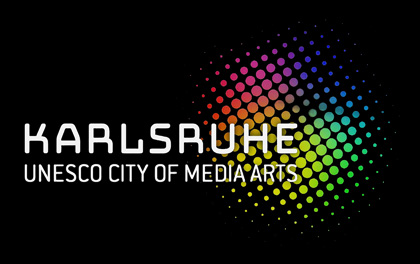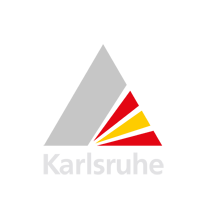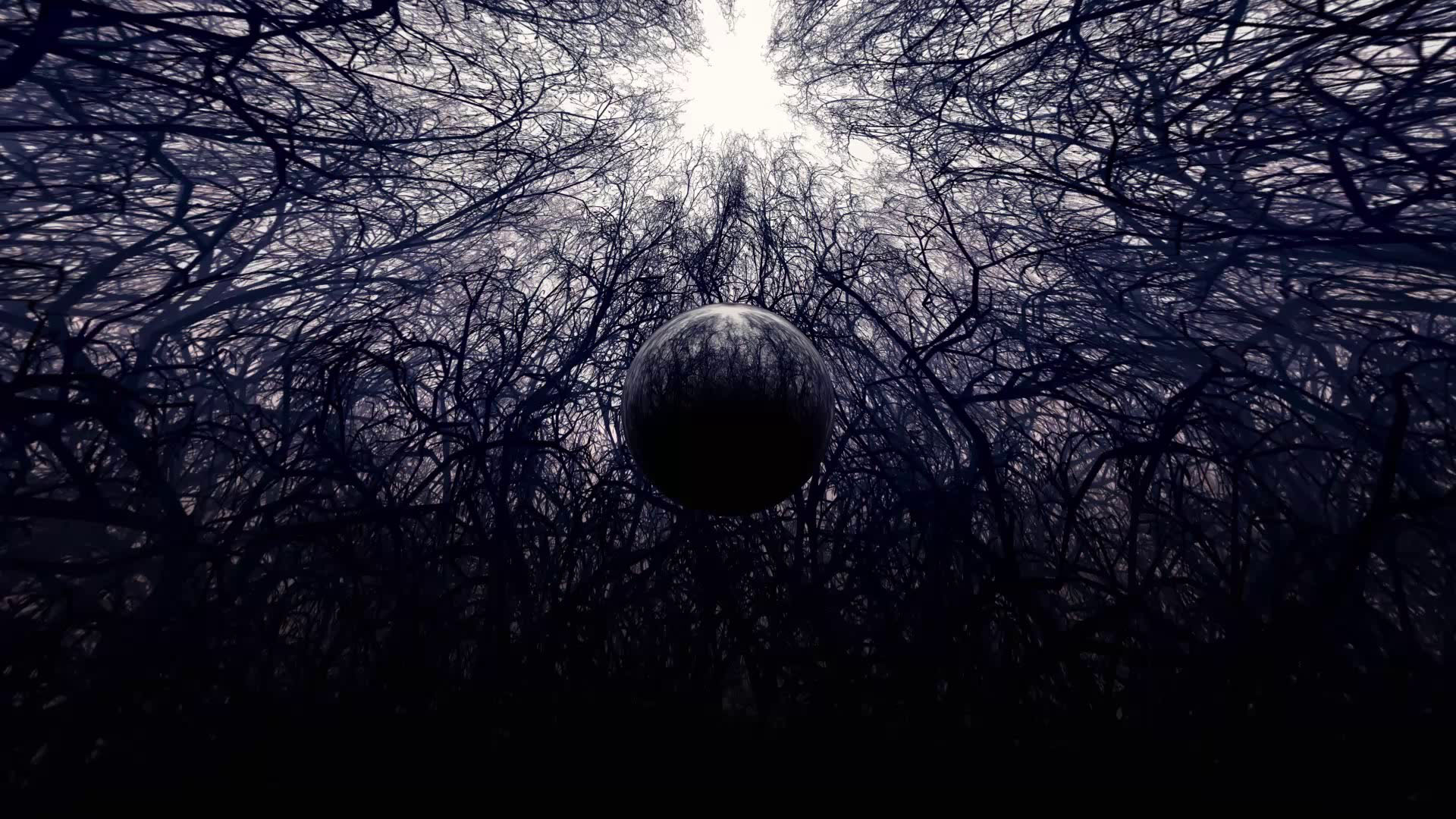Shelter exhibition, Adlerstr. 32, Karlsruhe, October 2023
“Shelter” depicts a point of rest on the escape route from a former home, fleeing from people or circumstances that threaten one’s own life and the lives of friends and relatives.
German/English PDF version (7.4MB)
summary
The last decade’s massive refugee movements are evidence of the basic need for a safe home. We are currently living through times of big cultural changes that constantly question our traditional forms of living and thinking. Climate crisis and worldwide conflicts have withdrawn the livelihood of many people and flight is in some cases their only hope and only means of escape. The path towards a new life is often dangerous and even after finding protection in a new environment, many people continue to feel threatened, uprooted and remain traumatized for the rest of their lives.
On entering the installation, you find yourself in an unknown hiding place in the woods that is projected onto the walls and ceiling around you. In the center of the installation, protected from touch, is a mirror hemisphere that reflects the light of a single projector into the whole room. The reflected light paints the moving plants of a thicket onto walls and ceiling.
It’s a very familiar picture that many know from their childhood. Basically a good hideout, but potentially unsafe. While the plants suggest some protection, the surrounding sounds tell another story. Noises of the environment, voices and wind that blows through the trees create a situation that is in suspense and makes it impossible to be certain if everything is alright. The visitors cast shadows and can hereby interact with the vegetation. The stronger they move, the louder and eerier the outside soundscape becomes.
background
The work tries to describe an escape situation from the inside.
Acoustic memory fragments, monologues and dialogues of different scenes in a forest are triggered by movements of the audience. People are shouting, running, wrestling, lamenting, crying and whispering in this forest. In its core, the sounds are based on autobiographic situations from my past but they open up towards the current global refuge situation.
Voices
The work is kept entirely in the international language English. With the help of a circle made of twelve loudspeakers, the aim was to create a situation in the forest that sounds as natural as possible. Escape scenes and other sounds were mainly recorded in the sound studio and in the surrounding woods. From these fragments of noise and dialogue, I subsequently constructed three-dimensional environments. As flight can affect us all even in times of peace, the work does not reference a specific geographical forest.
For the sound of my installations, I often work spatially. Surrounding the audience with sound allows a particularly deep immersion in the situation. In "Shelter", special elements of the sonic dramaturgy are, in accordance with the theme, proximity and distance, narrowness and expanse. The audience is often addressed directly, either from the opposite side of the circle or directly at the interaction position, depending on the triggered sound scene.
In addition to human voices, the situation in the forest is also narrated by an ambient sound atmosphere: Startled birds, sirens, explosions as well as other human and natural sounds can be heard. Some sounds alternate between a peaceful and threatening impression. The intensity of the recorded sounds and voices is related to the intensity of the audience’s movements.
A fellow traveler speaks out
Memories of traumatic experiences often accompany and haunt us throughout our lives and can attach themselves to our surroundings in the form of flashbacks: Images and sounds of such flashbacks overlay with ordinary everyday situations. For example, there are fireworks in the artwork that at first can be hardly distinguished from gunshots and a train that seems to rattle in lockstep across the landscape.
Since an escape situation also involves sharpened or over-sharpened senses, another element is the alienation of natural sounds. Similar to the suggestion of faces in the branches of the trees, there is the suggestion of whispered and spoken words in the wind.
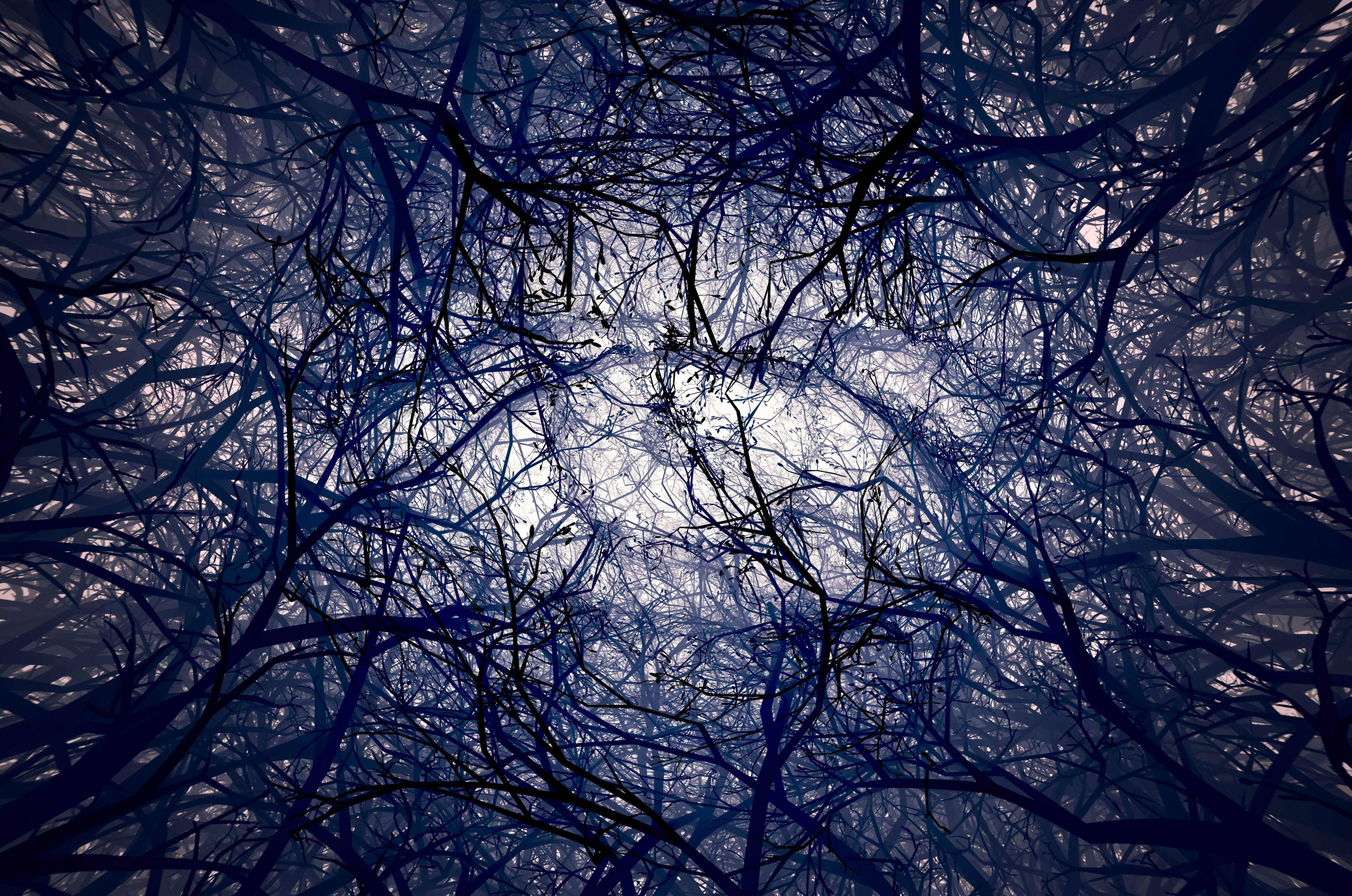
Guided plant growth (sketch)
One aim of this work is therefore to enable the audience not to talk about flight and refugees from the outside alone, but to expose themselves to a situation in which they may be a refugee, to make the uprooting and trauma of a lost home comprehensible while at the same time addressing the hope and confidence that a new beginning holds.
The first exhibition of the work took place in a listed building that was under reconstruction at that time and therefore had similarities with a temporary shelter on a hike or flight. I deliberately decided against a setup involving a tent or similar construction as projection surface since a trauma often does not allow us to take a distanced look at it from the outside.
In accordance with the theme of an escape, the work may trigger. But the concreteness of “Shelter” is also worthwhile. An escape situation can affect anyone, whether as a person fleeing or as a person providing protection. And it’s not limited to war scenarios. I am convinced that a rudimentary understanding of such an exceptional situation will remain a fundamental prerequisite for peaceful coexistence in the decades to come.
technique
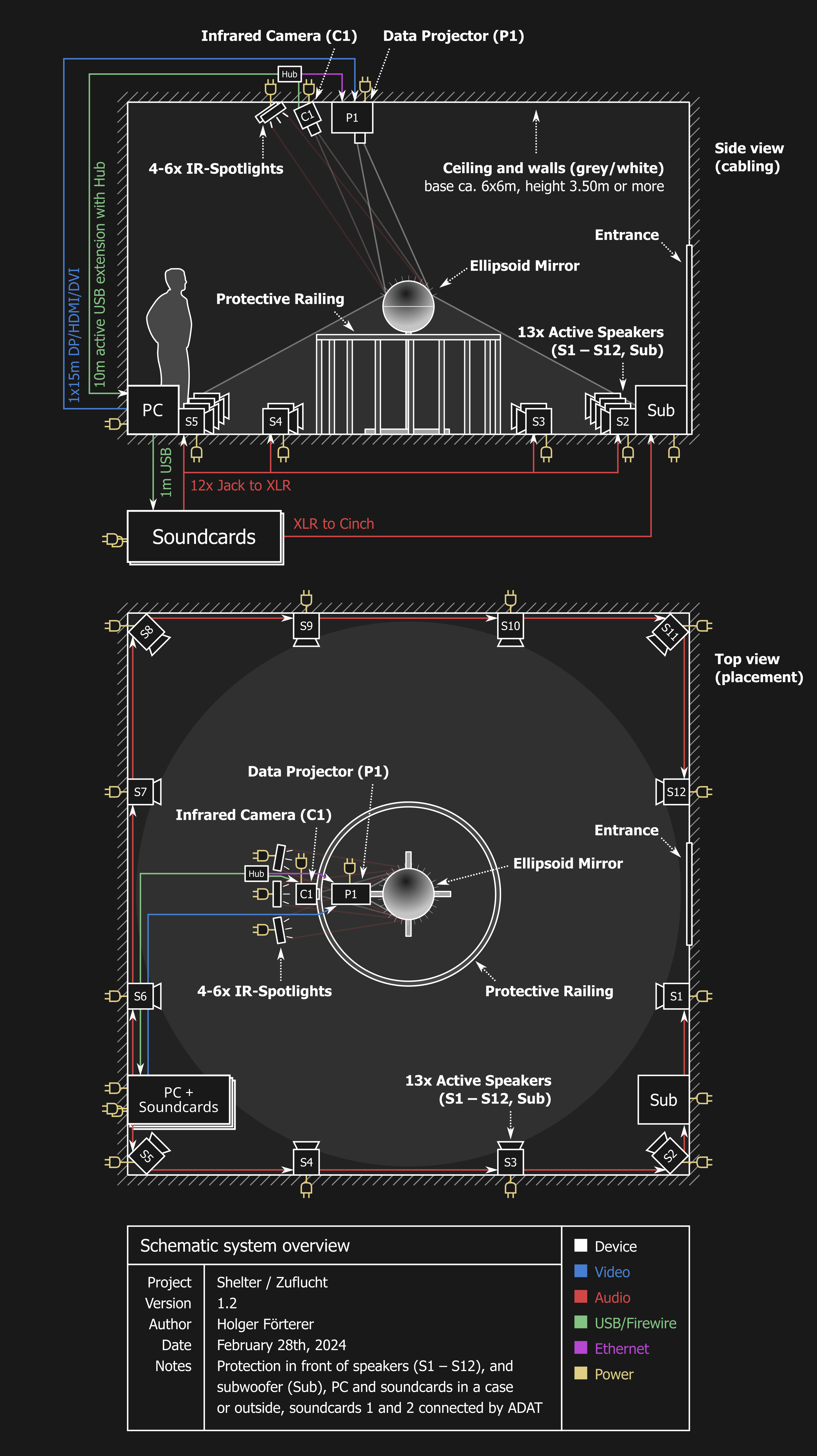
Schematic system overview
The installation uses a single 4k projector, a single mirror and a single infrared camera to reach 360° interactivity. Camera image and projection are spatially undistorted according to the geometric properties of all components involved.
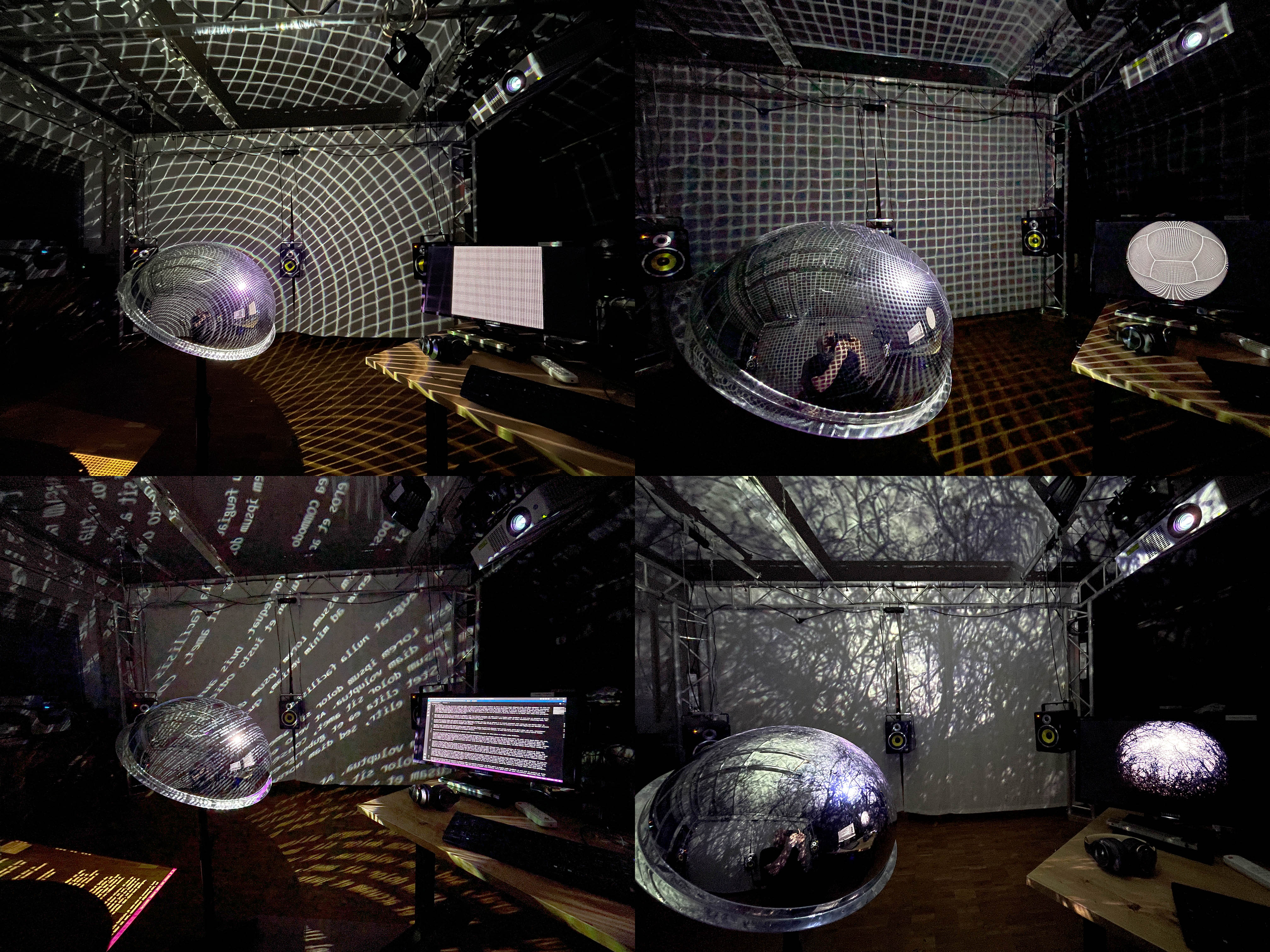
Test mapping with an industrial mirror
Spherical mirror projection mapping established itself also by the pioneering work of Paul Bourke around 2003/2004. I extended Bourke’s methods, combined them with my own works and developed them further.
By selecting multiple points within an approx. 6x6x4m sized room and a subsequent machine learning procedure, the time-consuming calibration process was greatly simplified. Real and virtual space are subsequently overlaid and form a unity in regard to the interaction.

360° mapping procedure using calibration points
This is also true for the 8 to 12 channel surround sound that uses simulated impulse reverberation to open and extend the space virtually. For a better depth impression, additional acoustic filters are used which imitate the effects of atmosphere and trees.
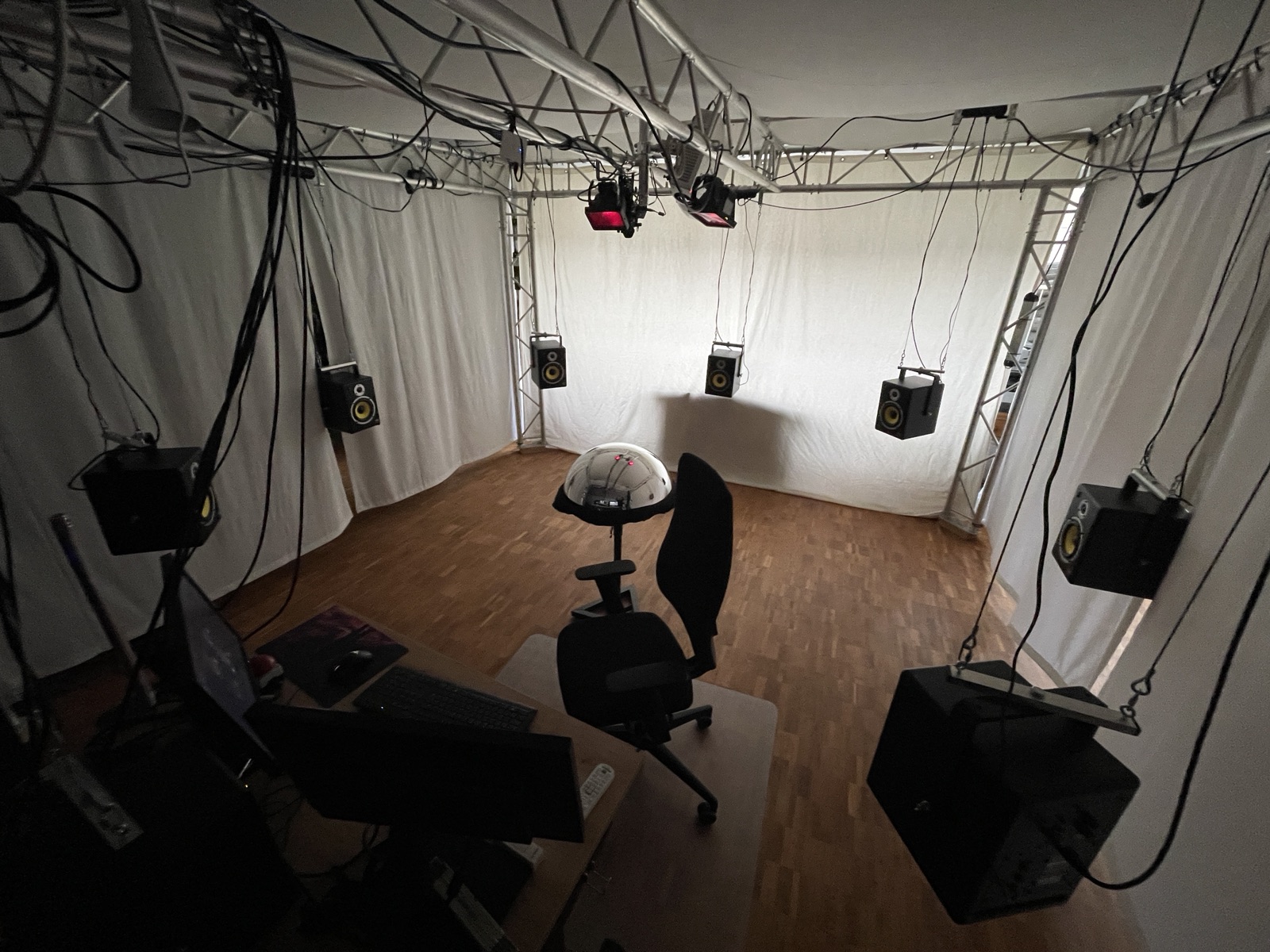
4x4m test setup with 8 channel surround sound
Among other things, seventy moving 3D sound fragments react to each other dramaturgically. In order to create a more consistent narrative thread, some sounds are played together or in each other’s neighborhood, others rather not. Human voice fragments are generally played to the end before a new voice fragment can begin.
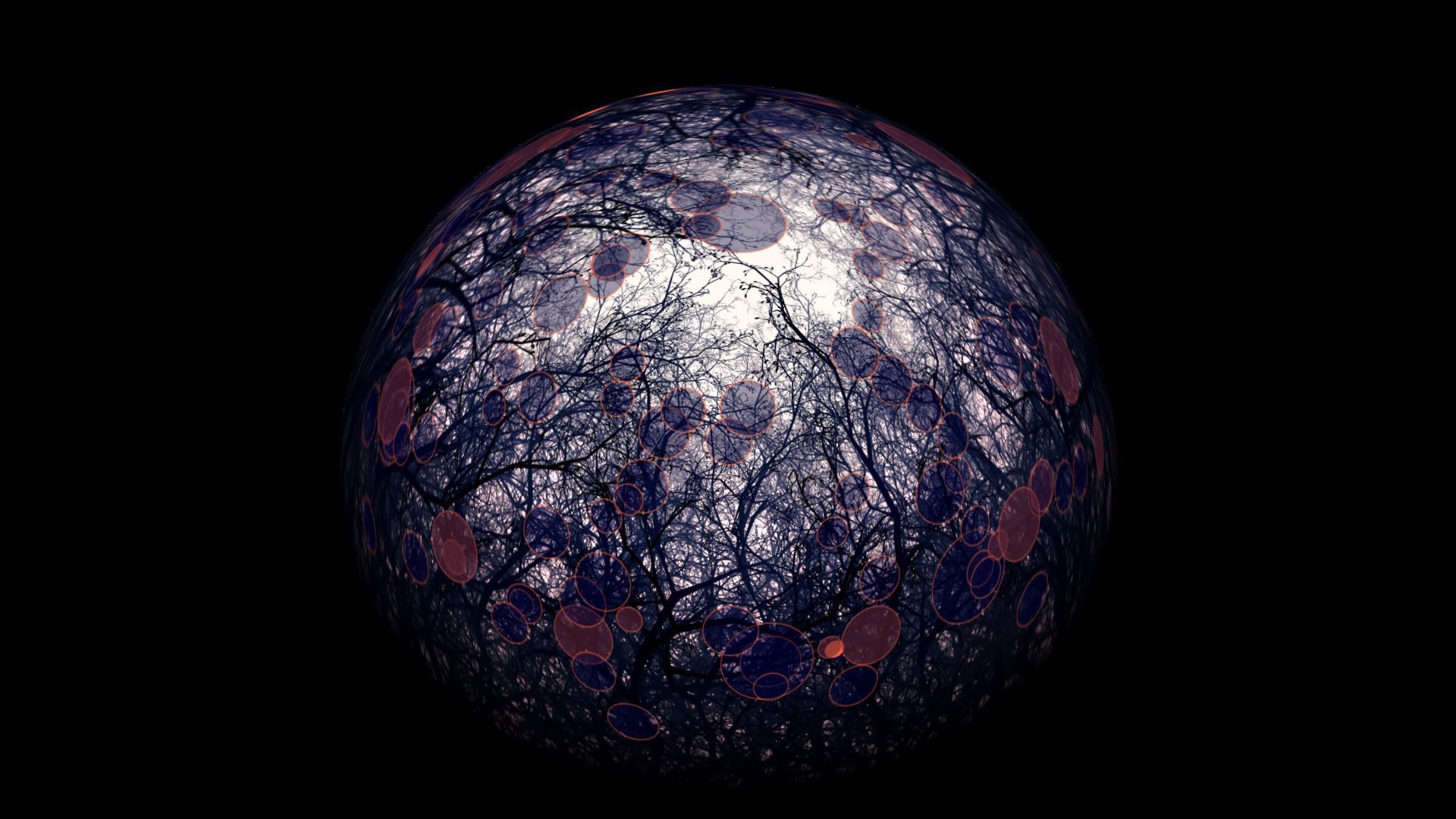
3D sound sources map
The speakers are calibrated using a measuring microphone to reduce the dependency on the acoustic properties of the room. During the first exhibition, the speakers were placed on the floor, tilted upwards by 60°. It is conceivable to recess the loudspeakers behind cloth into built walls at ear level and to drive an additional subwoofer if required.
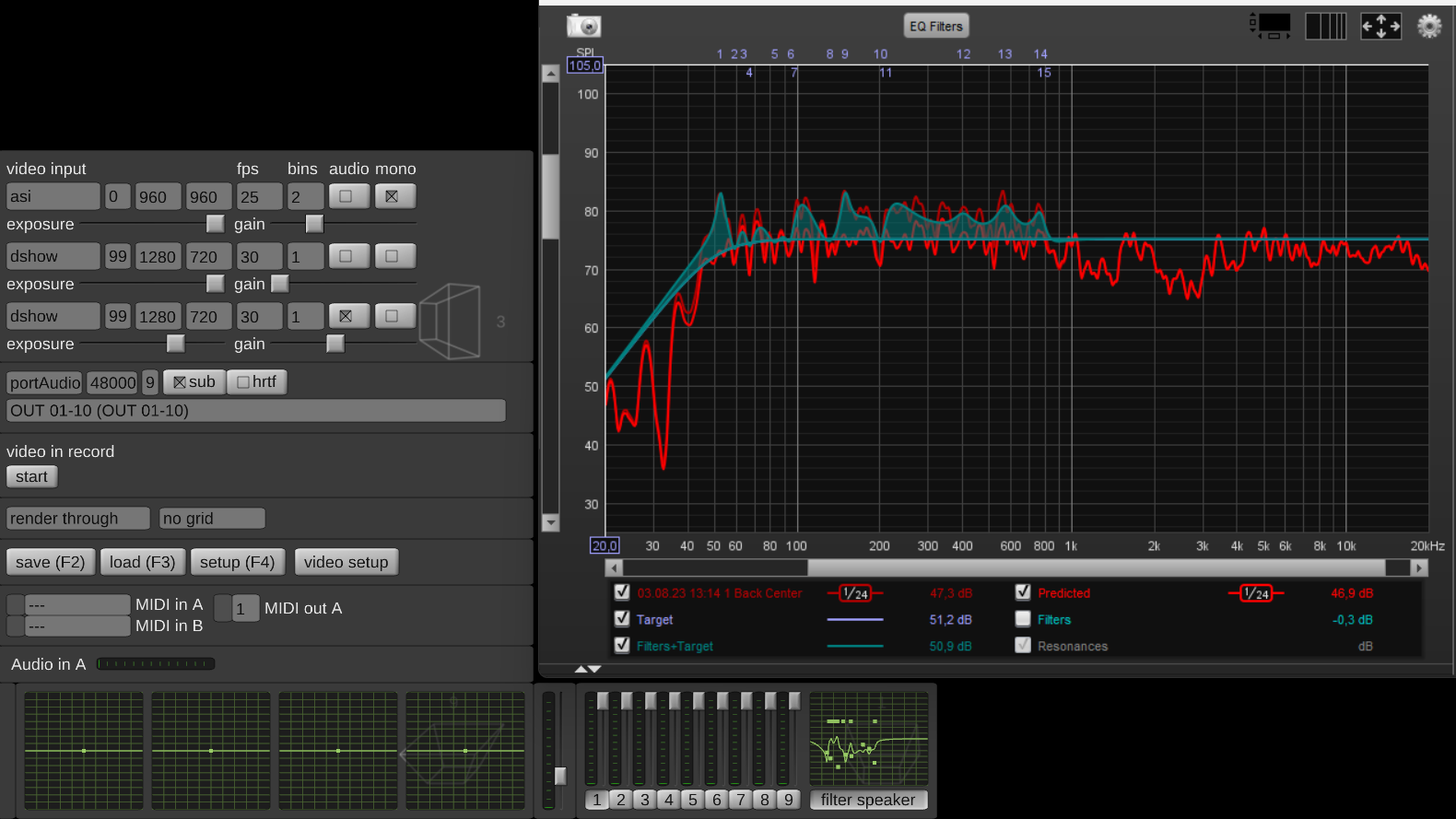
Sound calibration (own software and Room-Equalization-Wizard)
The virtual plants were generated by a separate part of the software before the exhibition. In addition to growth rules, gravity and light distribution in the room played a role in this process. Among other things, I have suggested images of faces by guiding the growth of the twigs.
The interaction is ultimately implemented using a physical simulation that models the effects of forces along the branches. For this purpose, movements in the two-dimensional infrared image had to be projected onto a virtual sphere and thereby harmonized with the physical spatial axes. Finally, a wind simulation and gravity ensure that the movement of the trees appears natural.
The mirror hemisphere itself is a custom-made product from New Zealand carrying the sensitive mirror surface not behind glass but necessarily on the outside. Due to the manufacturing process, it is more of a semi-ellipsoid. It is protected by a barrier and is cleaned of dust daily by a cold air blower.

The view of the infrared camera
The spherical mirror serves as an optical and analog “amplifier” of the projected anamorphic images. During the Renaissance, this technique was often used to deskew paintings on cathedral and church ceilings. But anamorphosis was also used to hide pictures for reasons of privacy and personal security. The concealment is reversed here: the projected pictures of dense bushes and trees unfold on the walls all around the mirror.
credits
Thank you very much to everybody who contributed to this mammoth project. “Shelter” would have been unthinkable without the work of these helping hands:
| Idea and Realization | Holger Förterer |
| Sound Scouting, Consulting and Recording | Lorenz Schwarz |
| Voices | Eva Judkins Rouven Israel Holger Förterer Ida Nordpol |
| Blaring Loud Pop Music | Frank Gärtner Susanne Ratzer |
| Exhibition Space | Robert Fülle Huisi He |
| Sound Equipment | Paul Modler MK Sound (HfG) |
| Construction | Jan Hollander Kai and Andreas Barbey, Schreinerei Kuppinger |
| Unwavering Support | Kwang Pansawas Niko Kinsch |
| Consulting / Print Media | Katja Löffel Robert Fülle Daniela Burkhardt Rathausdruckerei Karlsruhe |
| Camera Optics | Jörg Himpel, Lensation GmbH |
| Initial Camera Cage | Christian Wening Marc Teuscher |
| Video Documentation | Marc Teuscher David Loscher |
| Audio Documentation | Tom Buchleither |
| Mirror Hemisphere | Bennett Mirror Technologies |
| Mirror Masking | Nils Roßmann, Fablab Karlsruhe |
| Additional Sounds by | pond5 |
| Special Thanks | Ida Nordpol Solveig Wening Rainer Kuhn Christian Wening Nelly Dalakovi Judith Rastätter Michael Saup Jan Gerigk Sandra Beuck |
| Supported within the framework of the UNESCO City of Media Arts Karlsruhe |
Daniela Burkhardt Dirk Goldhorn Blanca Gimenez |
more videos and images
Interaction sketch, March 2023
Simulation of the installation April 2022
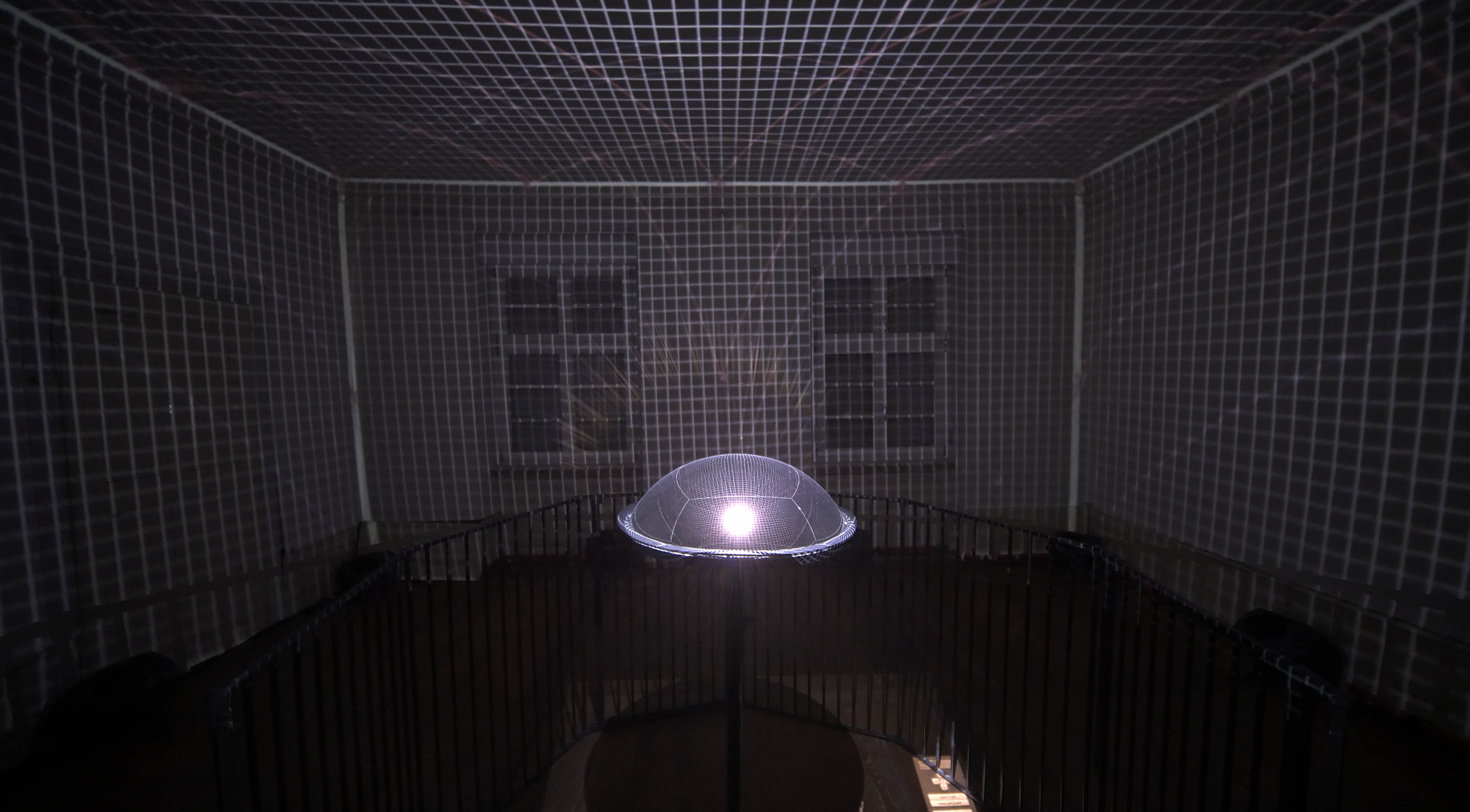
Image calibration of the first exhibition
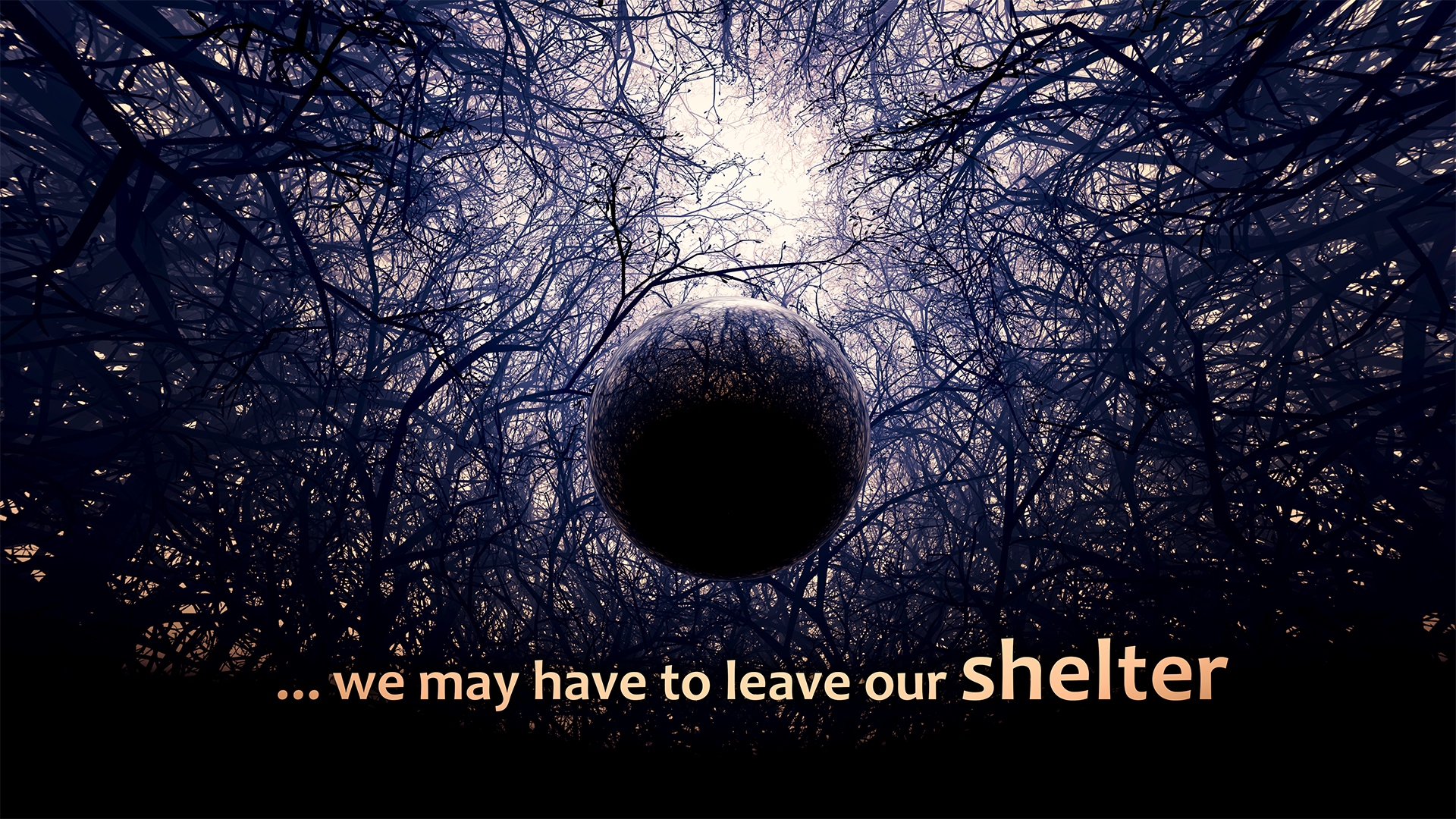
Front page of a flyer
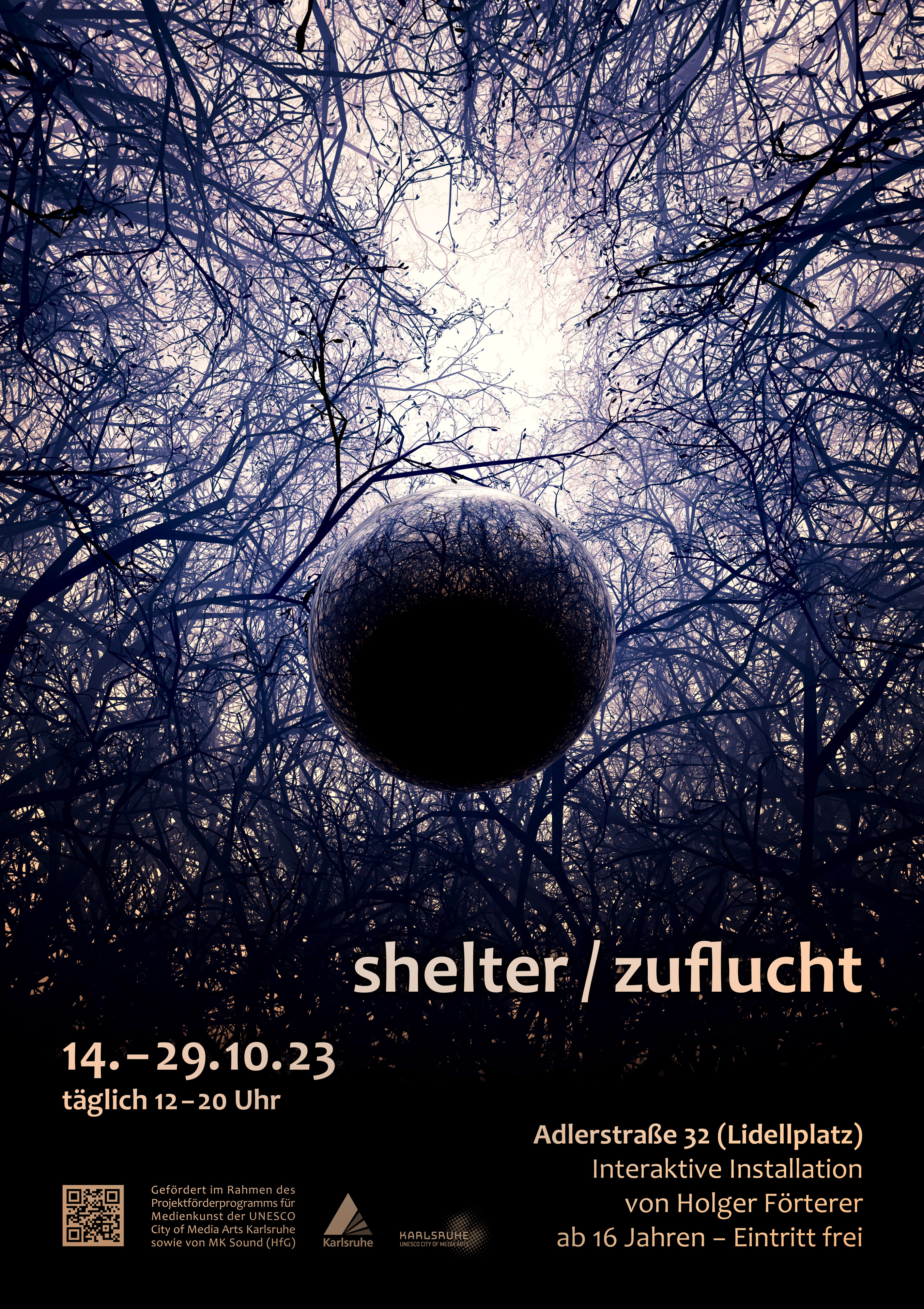
Poster of the first exhibition
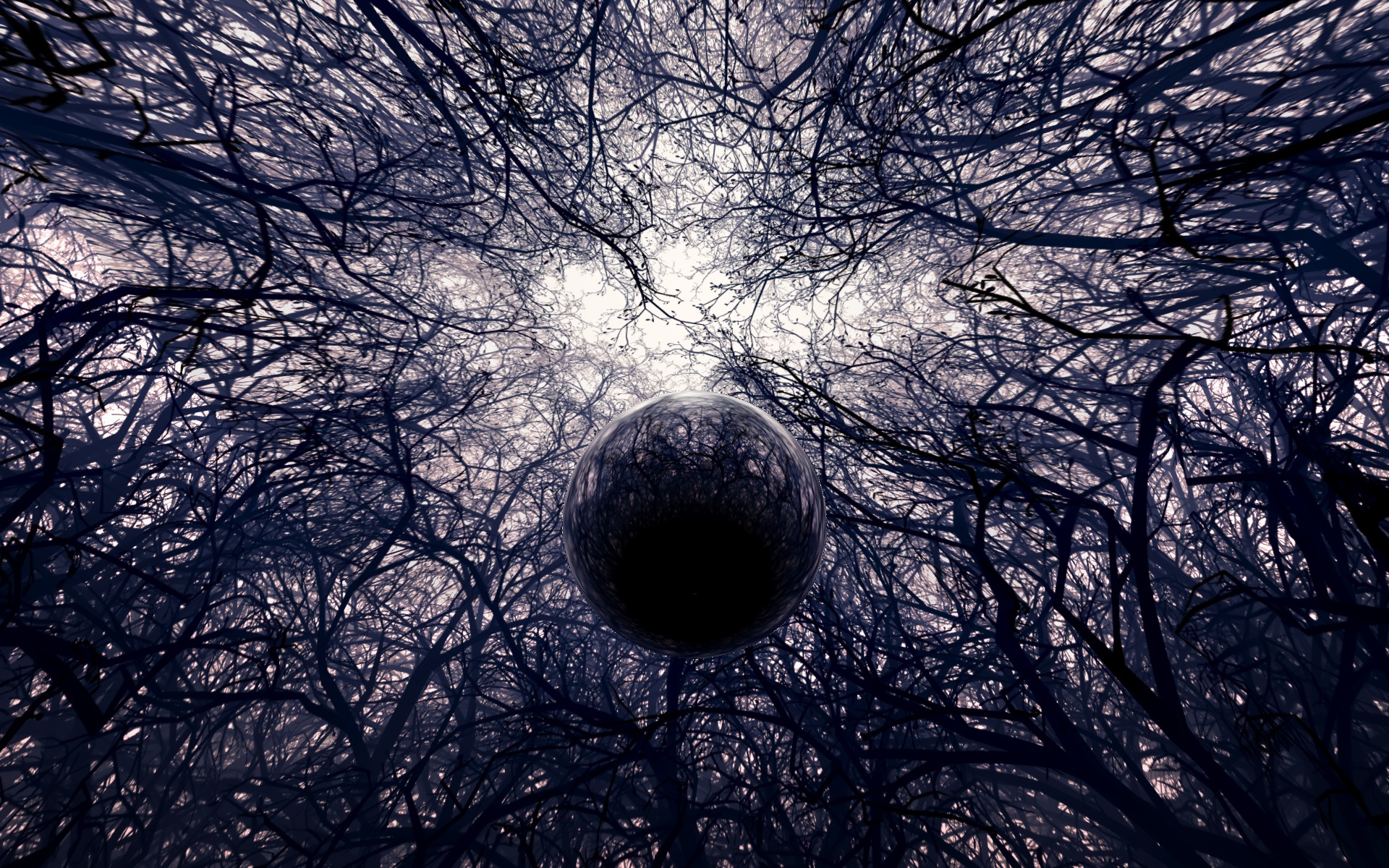
Reflection simulation (sketch)
additional links
Development blog entry
Shelter on Karlsruhe City of Media Arts
Paul Bourke's pages
